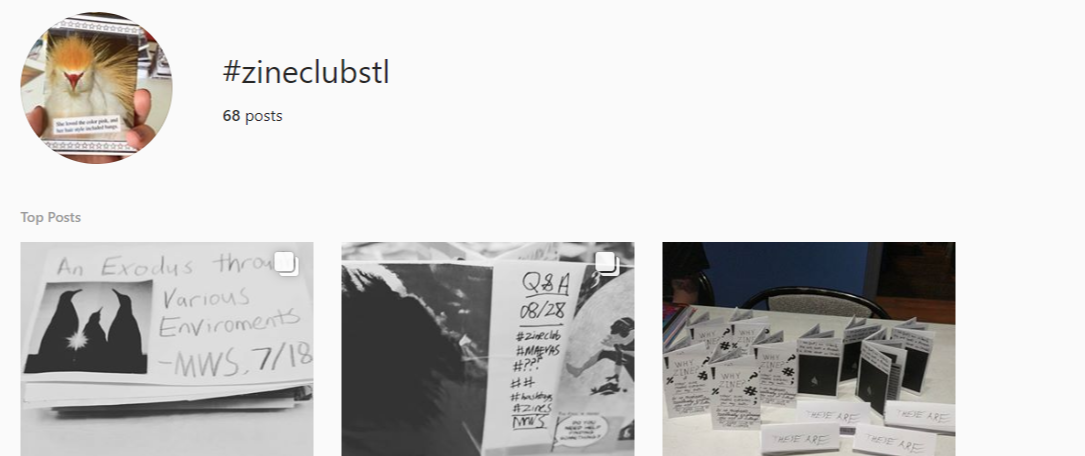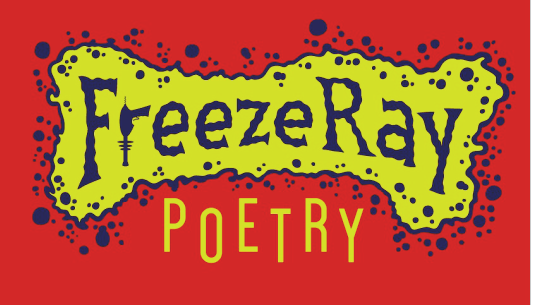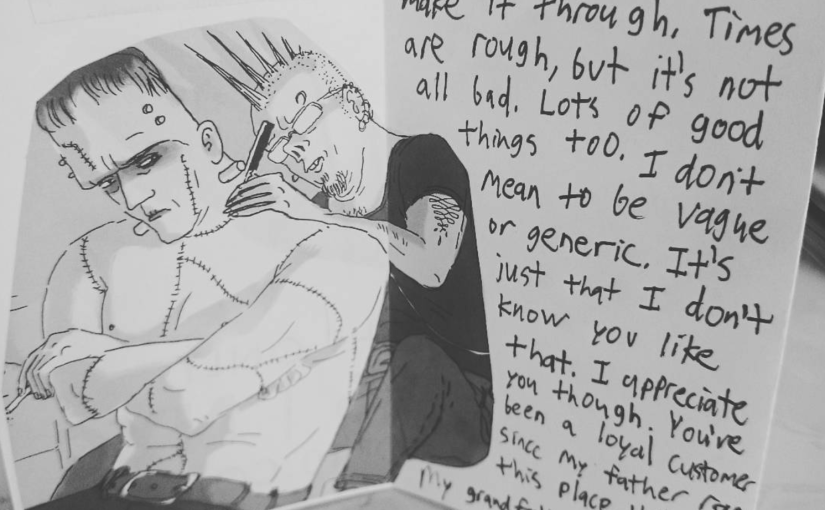An Oral History of Zining
by Mikkel Snyder

We here at FreezeRay love nerd content in all forms. We love poetry and fanfiction and videos, but this month we wanted to talk about a particular artform that one of editors has rediscovered: Zining.
In 2015, I had been living in St. Louis for about a year. Most of my friends were in the awkward phase of graduation and skipping town and I needed to figure out this whole being social as an adult. Now thankfully, as the phrase “most of” would imply, I still had a couple of connects in St. Louis and one provided a standing invitation to Zine Club.
Zine Club was run out of the apartment of someone who would later become a very close friend. Every Sunday, she’d provide paper, pens, scissors, exacto-knifes, and a ludicrous amount of magazines, textbooks, and old comics and provide some snacks while various folks gathered around a small table, cutting out texts and images to put into these mini-zines.
In essence, a “zine” is just a magazine, although the colloquial usage equates the term with a self-produced publication generated from repurposed materials or hand-crafted text and images. The zines I learned to make could be made with a single piece of paper and I didn’t expect to become enamored with the artform, but here we are.
As much as I am a tactile learner, I have never actually been good with my hands when it comes to drawing or even handwriting. I’m a techie by trade and writer by passion, so visual arts tend to confound me. But when I first sat down to zine in a friend of a friend’s apartment, I was told there was “no wrong way to zine” and while that is true of probably any artform, there is something particularly liberating about that phrase when it came to zining.
The beauty of zining is the beauty of free association. It’s seeing a stack of old documents and finding a new use for them. I remember flipping through magazines and cutting out things that just caught my eye. I remember the joy of arrangement and placing things on page and stitching together something that matched some unknown aesthetic. Over the next couple years, I always zined with intention. Sometimes, it would be to only use photorealistic image. Sometimes, I limited myself to the stuff I could harvest from a single New Yorker issue. More often than not, it was “oh hey, let’s find all the comic book panels and retell a story with them.”
In 2015, I had been living in St. Louis for about a year. Most of my friends were in the awkward phase of graduation and skipping town and I needed to figure out this whole being social as an adult. Now thankfully, as the phrase “most of” would imply, I still had a couple of connects in St. Louis and one provided a standing invitation to Zine Club.
Zine Club was run out of the apartment of someone who would later become a very close friend. Every Sunday, she’d provide paper, pens, scissors, exacto-knifes, and a ludicrous amount of magazines, textbooks, and old comics and provide some snacks while various folks gathered around a small table, cutting out texts and images to put into these mini-zines.
In essence, a “zine” is just a magazine, although the colloquial usage equates the term with a self-produced publication generated from repurposed materials or hand-crafted text and images. The zines I learned to make could be made with a single piece of paper and I didn’t expect to become enamored with the artform, but here we are.
As much as I am a tactile learner, I have never actually been good with my hands when it comes to drawing or even handwriting. I’m a techie by trade and writer by passion, so visual arts tend to confound me. But when I first sat down to zine in a friend of a friend’s apartment, I was told there was “no wrong way to zine” and while that is true of probably any artform, there is something particularly liberating about that phrase when it came to zining.
The beauty of zining is the beauty of free association. It’s seeing a stack of old documents and finding a new use for them. I remember flipping through magazines and cutting out things that just caught my eye. I remember the joy of arrangement and placing things on page and stitching together something that matched some unknown aesthetic. Over the next couple years, I always zined with intention. Sometimes, it would be to only use photorealistic image. Sometimes, I limited myself to the stuff I could harvest from a single New Yorker issue. More often than not, it was “oh hey, let’s find all the comic book panels and retell a story with them.”
Zining is relaxing. It’s gave me something to do with my hands. When my friend left town and Zine Club unofficially ended, I kept the tradition up at my local comic shop and at a coffee shop across the river in Alton, IL. It was an artform that let me socialize in a very particular way: sharing the joy of recycling and repurposing. I even dedicated a project for my Master of Science of Education to informing people about the joys of zining. https://zineclubstl.wordpress.com/ is one of my proudest creations because it’s a testament to a hobby that’s giving me joy. I kept using the hashtag (https://www.instagram.com/explore/tags/zineclubstl/) long after the club because I have learned to appreciate the reuse of things.
To zine is find a piece of a universe and make it your own. It doesn’t have to make coherent sense. It doesn’t need to fit some standard. It’s just way to find joy in seeing how all sorts of things fit together in a wonderful collage.
--Mikkel Snyder
To zine is find a piece of a universe and make it your own. It doesn’t have to make coherent sense. It doesn’t need to fit some standard. It’s just way to find joy in seeing how all sorts of things fit together in a wonderful collage.
--Mikkel Snyder

